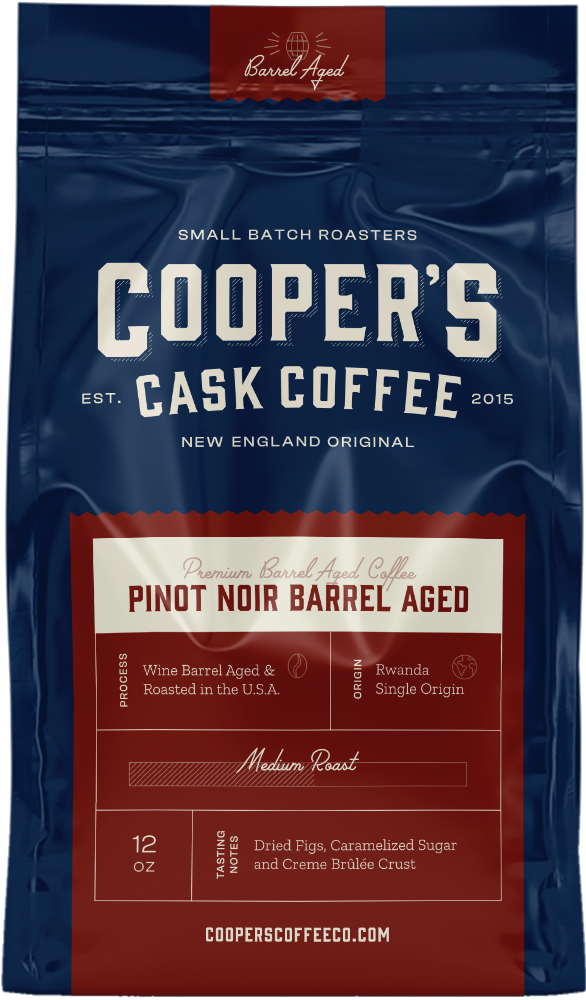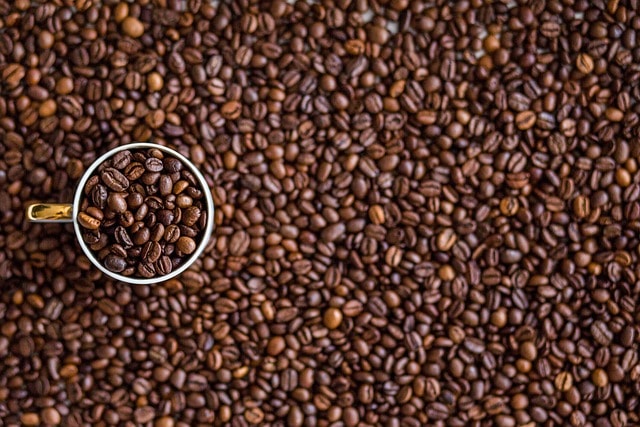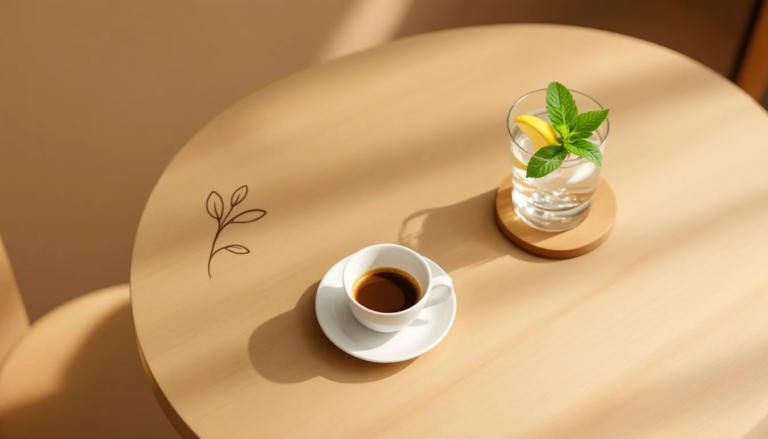Check your clock. Is it 6:30 a.m.? That’s wine o’clock. 2:26 p.m.? Wine o’clock. Any position on the dial that coincides with you being conscious? Yes, that’s wine o’clock.
It is if you’re brewing wine barrel aged coffee from Cooper’s Cask Coffee. Our mad scientist coffee experts have found a way to infuse coffee beans with delicious flavors from retired wine barrels. The end product puts the best of coffee and wine together for a cup of java that elicits the joy of coffee and the palate pleasures of wine—with none of the alcohol.
Let’s dig deeper into the surprisingly tasty relationship between coffee and wine.
Is wine coffee a thing?
Short answer: you bet it is.
The longer answer depends on how you want to enjoy the flavor profiles offered by both of these drinks. Plus, you’ll have to decide whether you can drive after drinking it!
Alcoholic Coffee Wine
Wine is made by fermenting fruit, most commonly grapes. Some wines are made from other fruits, like apples, pears, plums, and more. There’s even a wine made from bananas. #ThankYouFlorida
Fermentation to make alcohol only requires 4 things:
- Sugar dissolved in water
- Brewers yeast
- An air lock (lets CO2 out, but blocks air from getting in)
- A consistent ambient temperature around 77 to 90 degrees
Anything else included in the fermentation process usually adds flavor. Grapes are high in sugar, so they help jumpstart the fermentation. As the yeast becomes active and begins digesting the sugar, it excretes carbon dioxide, heat, water, and ethanol. From there, the flavors of the grape evolve into the hallmark flavors of specific wines.
How does coffee enter this picture? It’s not the coffee beans or brewed coffee that you enjoy at home that gets used to make the wine. It’s the coffee fruit.
Coffee Beans Are Actually Seeds
The seeds that become coffee “beans” are located inside a coffee cherry. These cherries grow on coffee shrubs, which are tree-like plants that enjoy higher altitudes and warmer climates. The cherries are edible, with a lightly sweet, earthy flavor.
The coffee cherry has a skin and pulpy flesh that surround two seeds. Those seeds, with their flat sides back-to-back, are what eventually get roasted by our master roasters and arrive fresh at your door as your latest order of Cooper’s Cask Coffee.
Some coffee fruits only have 1 seed inside, which is called a teaberry. For example, our single origin Tanzania Peaberry Medium Light Roast Coffee comes from a coffee varietal that only produces 1 seed per cherry.
Making Coffee Wine the Old-Fashioned Way
Some winemakers have experimented with coffee fruit, using the pulp and skin to create coffee wines. Depending on the vintner’s style, the wine can be dry or sweet. All of them have rich overtones of coffee, along with the hallmark flavors of red wine, such as oakiness and a cherry taste.
Cold Brew Coffee Wine
This is an easier, and easily home-based, version of wine made from coffee. This time, however, you make a cold brew coffee, then treat that like the water base for fermentation. Add sugar, yeast, warmth, and the airlock. Put it somewhere safe, and a few months later, it’s ready to drink.
Imagine an alcoholic wine with a kind-of coffee flavor and smell. We won’t kid you, it makes us think of pruno. Aaaand scene.
Taking Alcohol Out of the Picture
We’re closer to enjoying wine o’clock anytime you want, including a tasty single origin coffee, all in one cup. There are 2 ways to create wine coffee without the alcohol.
Wine Soaked Coffee Beans
Some coffee companies offer a version of wine infused coffee. Their process involves taking green coffee beans and soaking them for several days in wine. The beans are removed from the wine, dried, and roasted.
This is certainly a way to get wine flavors and aromas into your coffee. We tried it, and we didn’t like that sometimes the wine could overpower the flavors of our single origin coffee. We prefer they work in concert rather than duking it out on your palate.
Plus, we’re coffee snobs and don’t like adultering our beans in liquid flavorings or chemicals of any kind. Which brings us to what we think is the best way to enjoy wine infused coffee.
Wine Barrel Aged Coffee for Anytime Pleasure
Let’s pop the cork on some knowledge for a wine infused coffee that respects the coffee bean and the wine. It starts with the wine barrel.
The Barrel Aging Process
Our barrel aged coffees surprise and delight anyone who enjoys good coffee, from the joe-on-the-go morning person, to the sit-back-and-sip connoisseur.
We purchase freshly retired wood barrels from distillers and vintners. These “wet” barrels still have the spirits or wines soaked into the char inside the barrel. We prefer this over dry barrels, which have been given time to let the char dry out. Wet barrels are able to infuse flavors and aromas better and faster than dry barrels.
To fill the barrels, we choose specific single origin green coffee beans based on how their roasted flavor profile will complement the wine or spirit flavor profile. We add the green coffee beans to the barrels and let them age for 4 to 8 weeks.
During this time, the aromas and some of the moisture from the char infuse into the beans. This process adds zero artificial flavors or additives, and it doesn’t require the beans to soak for days in the wine or liquor. Ours is a slow, steady, painstaking way to infuse amazing flavors.
When the infusion is done, we roast the beans to perfection on a per-order basis so that you get the freshest barrel aged coffee beans available.
And we offer a 100% satisfaction guarantee. If for any reason you’re not satisfied with our high-end coffee beans, just let us know within 30 days of purchase and we’ll replace it with a different coffee, or give you a full refund, your choice! PS: We don’t charge shipping for returns, either.
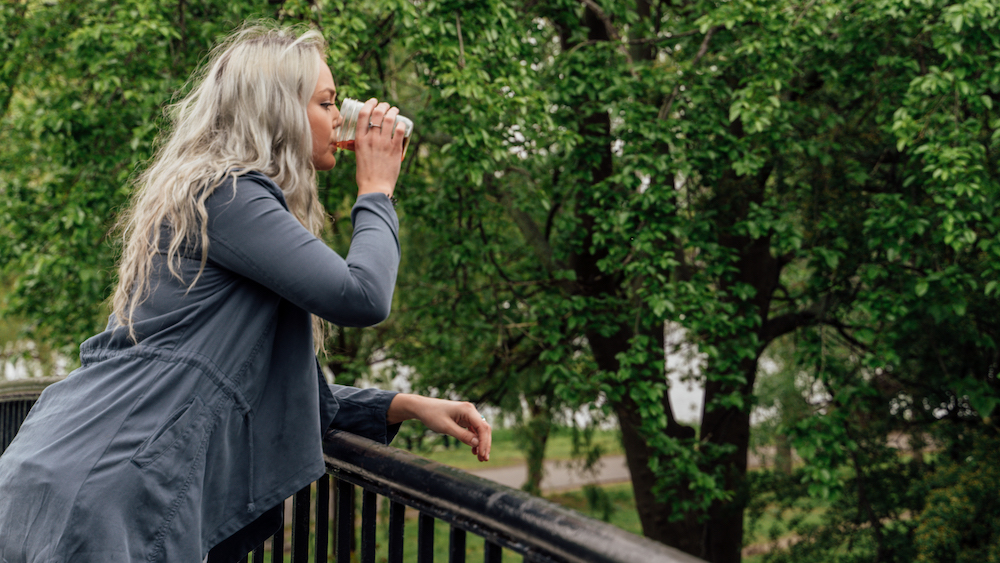
Our Wine Barrel Aged Coffee Choices
We bring the flavors of coffee and wine together for a refreshing new experience in your cup. Red or white, it’s wine o’clock at Cooper’s!
Chardonnay Barrel Aged Coffee
Cooper’s Cask Coffee Chardonnay Barrel Aged Coffee begins life as our Kenyan AA single origin coffee beans.
After aging in chardonnay wine barrels, we give each order a slightly darker medium roast.
This finishing touch creates a final coffee flavor profile with hints of honey wheat, bittersweet chocolate, molasses biscuit, and a dark cherry sweetness and a suggestion of honeysuckle nectar. The mouthfeel includes a delightfully heavy, syrupy body.
Cabernet Sauvignon Wine Barrel Aged Coffee
Cooper’s Cask Coffee Cabernet Sauvignon Barrel Aged Coffee ages Costa Rican single origin beans in cabernet sauvignon wine barrels for a beguiling complexity of flavors.
Each order receives a medium roast for a vibrant bouquet of aromatics. The final coffee flavor profile includes sweet, dark fruited notes accented by honey, chocolate, and molasses, with a toasted oak finish.
Pinot Noir Wine Barrel Aged Coffee
Our Pinot Noir Barrel Aged Coffee takes pinot noir wine barrels and fills them with single origin Rwanda green coffee beans.
These beans are uniquely special, as they are high-grown at elevations of roughly 5900 feet to 6100+ feet in an area known as the “land of 1000 hills.” This Bourbon varietal lends a balanced sweetness with a slightly tart, zingy finish.
We medium roast each order, letting more of the internal sugars of this bean rise up for a coffee flavor profile, including a rustic sweetness of dried figs with overtones of rich caramel, brown sugar, honeyed sweetness, and a bit of ginger snap.
You’ll also notice that the heavy, sweet body of our Pinot Noir infused coffee hints at the taste of caramelized sugar—like from a crème brûlée crust.
A Word About Our Barrels
When you see us using the word “barrel,” we’re not talking about metal barrels such as oil barrels. Our barrels are modern oak barrels used for aging spirits or wine.
The Life of Wine Barrels
For aging wine, wine barrels can only be used about 3 times before the wood becomes “neutral.” When the wood in a barrel is neutral, it no longer adds its own flavor to the wine—such as the tannins in the wood and the effects of the char depth on flavor.
How does this affect the wine? Let’s say you enjoy an “oaky” glass of vino. That wine probably aged in a newer barrel with the wood tannins fresh and available.
How big is a barrel?
Size defines whether a barrel is, in fact, a barrel.
- Standard American Barrel: 53 gallons. Whiskey and bourbon producers most frequently use this size for aging their wares.
- Hogshead: 63 gallons. Coopers disassemble standard American barrels, using the wood from 5 of them to build 4 Hogshead barrels.
- Sherry Butt: 132 gallons. This taller and more slender barrel received the “Sherry” name because sherry starts life in these barrels. Distillers often use retired sherry barrels for infusing whiskey with pleasant and slightly sweet sherry overtones.
- Quarter Cask: 13 gallons. At 1/4 the size of an American barrel, these casks are mostly used to finish a spirit at the end of maturation.
A Historical Note About Oil Barrels
In modern times, we think of oil barrels (technically a steel “drum”) as big metal barrels. Interestingly, a barrel of oil as a measurement is 42 gallons. Most physical oil barrels/drums are 55 gallons.
Retired oil barrels find new life in many ways:
- Trash can
- Rural trash burn container
- Barrel smoker
- Pizza oven
- Bull riding practice (via bungee straps and a saddle)
- Composting
- And a creative and surprising number of other ways (including a budget-friendly R2D2. Yes, we’ve seen it.)
Were oil barrels always made of metal? No. In 1859, a group of oil producers met in northwest Pennsylvania. At that gathering, they decided that a 42 gallon wooden barrel was the best way to transport their “black gold.” This size and style of transport was adopted officially in 1866.
Once used for oil, these barrels were forever unusable for storage of any foods. But in the beginning, even oil traveled the world in an oak barrel.
You Don’t Need a Barrel to Store Your Coffee
We have some advice on how to store your Cooper’s Cask Coffee to keep it at its freshest.
Buy Enough Coffee (But Not Too Much)
You might think buying a 4-pound bag of coffee will last you months! Yes, it will; however, the freshness and peak flavors won’t. We wholeheartedly recommend you buy what you can drink in a couple weeks to a month.
To enjoy the freshest roast possible without worrying about running out, join our subscription service. Set the frequency of shipment and the amount of coffee you’ll need between shipments—and then fuggedaboutit. You’ll always have coffee near you whenever you want it.
Resist Opening the Bag Early
We love it too: the smell of freshly roasted coffee beans. Just resist opening the bag until you have to. Our bags have that built-in air dam that lets CO2 escape (a byproduct of roasting). It doesn’t let any air in, so your beans are safe from exposure to more O2, which degrades the beans.
Find a Cool, Dry Place for Storage
Store your Cooper’s Cask Coffee wine barrel aged coffee in a cool, dry place. Make sure heat sources, including sunlight, can’t reach the storage container. Heat leaches the oil out of the beans quicker, reducing flavor and mouthfeel in your cup.
Freezing Doesn’t Help
If your coffee container isn’t airtight, condensation can occur. This can allow unwanted flavors into your coffee and/or allow the CO2 to expel into the freezer compartment, flavoring your other foods. The added moisture can also induce freezer burn in short order.
This includes the bag we send your coffee in. Putting that unopened bag in the freezer can cause the air dam to malfunction.
Airtight Containers Are Your Friend
Airtight containers remove the chance of exposure to more oxygen. However, they must be able to vent to the CO2 so that you don’t have a pressure buildup.
We’ve got the just-right container for our Cooper’s Cask Coffee: our Atmos Vacuum Canister. This airtight coffee container has an integrated manual vacuum pump that works easily, needs no batteries, and pulls the extra air out of the canister.
The Atmos Vacuum Canister also has an airtight silicone seal to stop moisture, odors, and other funk from getting to your coffee. Order yours for a great way to save great taste.
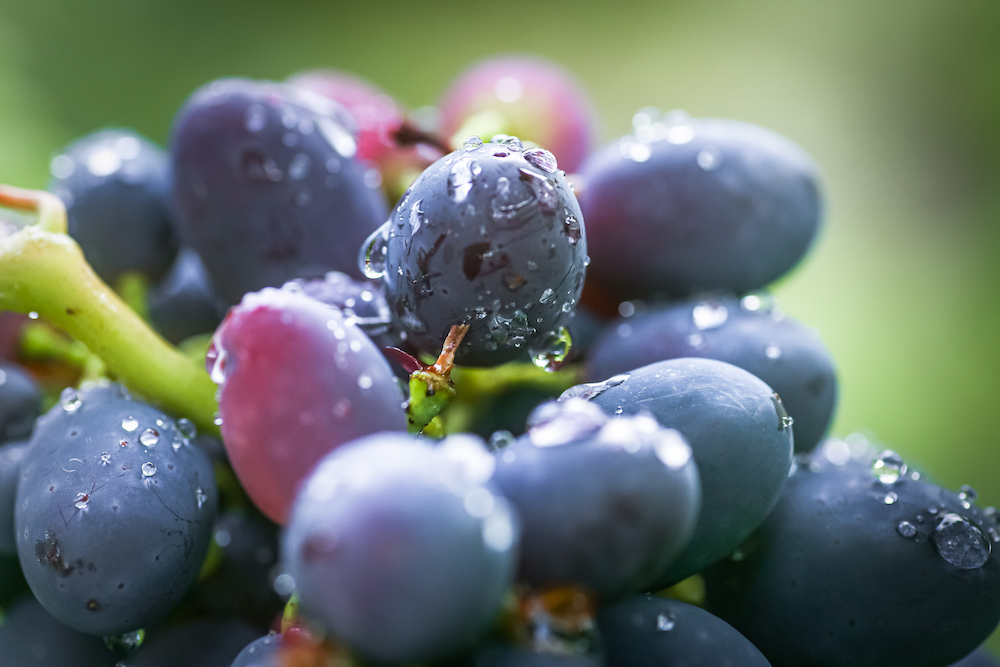
The Wines We Choose for Wine Barrel Aged Coffee
The 3 wines Cooper’s Cask Coffee uses to make our wine barrel aged coffee include some of the most popular wines in the world.
Through statistical research, flavor profile analysis, and extensive in-house taste testing while watching Game of Thrones, we narrowed our focus to these delicious wines.
The Making of Cabernet Wine
Cabernet Sauvignon originated in the Bordeaux region of France. The grapes cultivated there have been dispersed to warmer climates across the world. These wine-producing regions add their own terroir to the final product, along with the grape’s common flavor expectations—which work beautifully in our Cabernet Barrel Aged Coffee.
Grape Harvesting
When they’re at their optimal ripeness, vintners either hand-pick or machine-harvest the grapes. They’re lovely to see on the vine, with thick, black skins full of tannins. Harvesting must be timed correctly to ensure the right balance of sugars, acids, and tannins.
Crushing & Destemming
Romantically, we like to think of people stomping grapes to get the juices. In reality, the process is mechanized—and a lot less gross. The machines also remove the stems, leaving behind the crushed grape juice with the skins, pulp, and seeds still present. This is called “grape must.”
Fermentation
The vintner transfers the grape must to fermentation tanks, adding yeast to the pulpy liquid. When the yeast activates, it begins to convert the sugars into alcohol. Depending on the winemaker’s style, this process may continue for days or weeks.
Aging
Welcome to the oak barrel. Typically, the fermented wine is strained and stored in oak barrels, where it ages for 7 to 10 years. During this time the wine develops complexity, infusing characteristics from the wood, including flavors of vanilla, spice, and oak.
Blending
Winemakers may enhance specific qualities of the grape and/or the region by blending Cabernet Sauvignon with other grape varieties, such as Merlot or Cabernet Franc. Each vintner creates their own flavor “brand” for distinctive experiences in the glass.
The Making of Pinot Noir Wine
Pinot Noir delivers a harmony of red fruits to the palate. The wine has a pale to medium red color, as the grapes themselves appear dark, but the skins are thin.
Pinot Noir presents a challenge for orchard owners, because it’s hard to cultivate due to the fragility of that thin skin and the vine’s sensitivity to environmental fluctuations.
When successfully grown and vinted, Pinot Noir delights with a complex array of flavors, including variables from raspberry/cherry overtones to hints of earth, tea leaves, and even cloves. The aroma spins a tale of red fruits, earthiness, gentle spiciness, and hints of vanilla and smoke from the oak barrel aging.
Grape Harvesting
There’s no mechanized picking for this fragile fruit. Pinot Noir grapes are only hand-picked to prevent damage.
Fermentation
Pinot Noir follows in the footsteps of most other red wines. The harvested grapes are crushed, with the grape must transferred to fermentation vessels. Pinot Noir typically ferments in open-top tanks for gentle extraction and preservation of the wine’s more delicate flavors. This also allows some environmental influence over the flavor, creating subtle hints unique to the vintner’s location.
Punching Down/Pumping Over
As the PInot Noir grape must ferments, the winemaker performs “punch downs” or “pump overs.” These processes both act to gently mix the grape skins with the juice. Either helps to extract more color, flavors, and tannins.
Aging
Time to create the barrels we use for our Pinot Noir Barrel Aged Coffee. Compared to other red wines, PInot Noir ages for a relatively shorter period of 2 to 3 years. Because of the delicate flavor profile, this reduced aging period keeps the oak barrel flavors from overpowering the wine’s profile.
Pinot Noir Flavor Profile
Pinot Noir wines deliver red fruit flavors, such as cherries and strawberries. These frequently arrive on the palate with earthy and sometimes floral undertones.
The Making of Chardonnay Wine
For those who appreciate white wine, our Chardonnay version of wine barrel aged coffee offers your new coffee experience.
The Chardonnay white wine grape variety grows in various wine regions across the world, strongly recognized in Burgundy in France, California, and Australia.
Grape Harvesting
Timing is crucial for the harvest, waiting until the peak ripeness for sugar and acid levels. Vintners harvest the grape bunches either by hand or by machine.
Pressing
Like red wines, winemakers gently press the Chardonnay grapes to separate the juice from the skins, seeds, and pulp. However, unlike red wines, the skins don’t make it to the fermentation tanks. This keeps the wine looking more “white” for consumption, and it lessens the tannin content.
Fermentation
The clarified grape juice pours into fermentation vessels. Yeast is added, and once activated, it begins to convert sugars into alcohol.
Aging
Our retired oak Chardonnay barrels have done their work for the wines they held, having imparted flavors of vanilla, butter, and spice. Most California Chardonnays spend 1 to 3 years aging, while others can go as long as 5 to 7 years.
Flavor Profile
Chardonnay wines come in a wide range of styles, because the winemaker’s processes heavily affect the outcome. The Chardonnay barrels we choose helped create wine flavor profiles including green apple and tropical fruit notes with buttery overtones. You’ll find our Chardonnay Wine Barrel Aged Coffee in our Wine Barrel Aged Coffee Boxed Set.
Wine Barrel Aged Coffee: a Fusion of Artisan Java and Fine Wines
Imagine having a wine and coffee bar ready in your kitchen, at your workplace, in your backpack while camping, or in your suitcase while vacationing.
Our wine barrel aged coffees deliver the best flavors from both worlds. But the pleasure goes further as you realize the care that went into:
- Growing single origin coffee beans.
- Acquiring the right aging barrels.
- Matching flavor profiles for the best fit.
- Testing multiple roasts for the optimum enhancement.
- Delivering the coffee freshly roasted to your door.
It takes a dedicated team of coffee experts to make it all work. It’s a tough job, but somebody’s gotta love it. #ThatWouldBeUs
It’s Wine O’Clock at Cooper’s Cask Coffee
We have over 7000 4 and 5 star reviews on Amazon for our products. Plus, we offer the coolest coffee gear for brewing, drinking, grinding, and enjoying your next cup.
Order your coffee choices on our website, and we guarantee the freshest coffee arrives at your door. That’s why we hand-write the small batch roast date and lot number on your bag. We really do guarantee your satisfaction. Not sure which one to choose first? Try our online coffee finder tool and discover your new favorite cup.
Small batch, big satisfaction. That’s Cooper’s Cask Coffee.
Sign up for our email list and get 10% off your first order!
